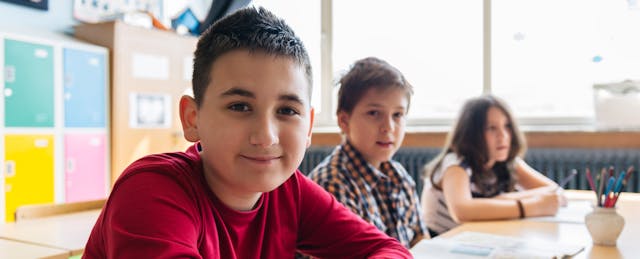Ricardo is a college freshman, male, Latino, and wants to be a high school teacher. This is like finding a pot of gold in the teaching profession, and it is exciting to think about the students who will be learning in his future classroom.
Ricardo grew up on the southwest side of Chicago and attended Chicago Public Schools. He carries a backpack with a sandwich and books over one shoulder to help him make it through the three hour commute to and from college each day. Ricardo is also DACA (Deferred Action for Childhood Arrivals).
His parents brought their family to the United States when he was a child. They were seeking a better life, but were considered illegal immigrants by U.S. officials. DACA, an immigration policy enacted in 2012, provides temporary legal status to young adults who came into this country as children. The aim is that Congress will develop a comprehensive immigration strategy that provides them a path to citizenship. For Ricardo, DACA means he can to go to college and work legally in the U.S.
Ricardo has many of the characteristics we want in aspiring teachers; smart, compassionate and committed to social justice. He also has one other characteristic we desperately need: shared experiences with his future students.
According to Education Week, “The new collective majority of minority schoolchildren—projected to be 50.3 percent by the National Center for Education Statistics—is driven largely by dramatic growth in the Latino population and a decline in the white population, and, to a lesser degree, by a steady rise in the number of Asian-Americans.” At the same time, the percentage of teachers-of-color hovers around an abysmal 20 percent nationwide. This dichotomy between professionals and those they serve is true for many sectors. Our future leaders in education, law, engineering and other professions often do not look like those they are serving across our communities. And this must change.
As a teacher of color, Ricardo will have similarities in culture and identity with his students. Shared experiences and empathy are key to developing strong relationships—and strong relationships are one important component of successful teaching and learning.
The good news is that through strong recruitment strategies, the number of Latino teachers is increasing; Golden Apple’s teacher preparation program received five times the national average of Latino applicants. This year, the program also received more applications from DACA candidates than ever before (African American teachers and Asian teacher applications did not see a significant growth). Though still small compared to the total number of applications, this is a trend of DACA over the last couple of years, and similar trends exist for other professions at several universities across the nation.
DACA students can enroll in college but they cannot get state or federally-funded scholarships. This often puts higher education out of reach for many of America’s brightest, newest, and highest potential immigrants. It also means we may lose a critical opportunity to develop additional great teachers and professional role models from diverse communities. It is precisely why we must ensure programs and philanthropic initiatives that support DACA students thrive. In Ricardo’s case, Dominican University has provided a substantial scholarship.
Currently, there are thousands of schools in the United States that serve over 31 million U.S. students in poverty. These are some of the hardest schools to staff with effective teachers. They also often struggle with financial resources and access to high-quality technology. These school communities have caring families but ones who typically struggle to navigate our complex system of public/charters, selective schools, tutoring, and social services.
Poverty and race often intersect. In many U.S. education systems, many schools of need serve students of color. Research tells us having effective teachers of diverse cultural and racial backgrounds is valuable for all students, and particularly important for students of color. These pupils need great teachers, and they need more of their teachers to look like them.
Ricardo wants to teach Spanish or bilingual education. This is a high-need content area and Ricardo will probably have several offers waiting for him as he graduates from college with his teaching certification. “Teaching Spanish doesn’t just mean teaching a language,” he says. “I get to learn more about culture and history with my students. This means they will learn so much about people around the world, and also be better citizens in our own country...”
As a nation, we must do everything we can to help Ricardo reach his dream— a dream that benefits all of us. And we must find more Ricardos out there; young Americans figuring out how they can completely belong in the country they were brought into as a child, and who want to serve this country as an adult by becoming a great teacher.


